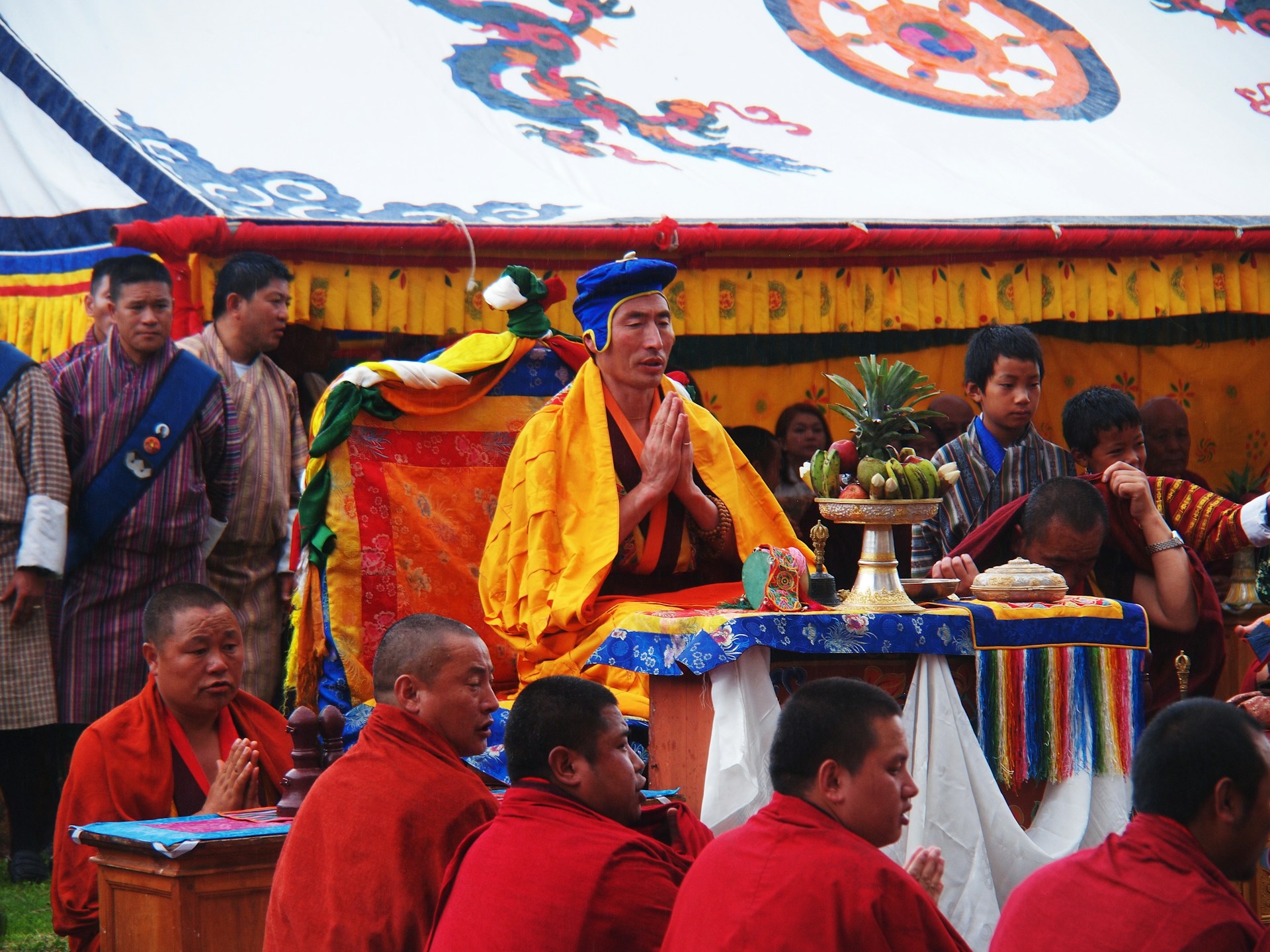Exploring Tibetan Culture in Northern India and Western China
Tibetan culture, with its vibrant traditions, Buddhist spirituality, and resilient communities, offers a profound travel experience. Nestled in the Himalayas, regions in northern India and western China are home to Tibetan communities that preserve ancient customs, colorful festivals, and serene monasteries. From the exiled Tibetan hub of Dharamshala in India to the sacred plateau of Lhasa in China, these areas invite travelers to immerse in a unique blend of spirituality and heritage. This guide, crafted for beginners, details how to explore Tibetan culture in northern India and western China, including top destinations, cultural highlights, and practical tips.
What Is Tibetan Culture?
Tibetan culture is rooted in Tibetan Buddhism, with traditions shaped by the Himalayan landscape and a nomadic past. Key elements include colorful prayer flags, intricate thangka paintings, yak butter tea, and festivals like Losar (Tibetan New Year). Monasteries serve as cultural and spiritual hubs, while folk music, dance, and handicrafts reflect community life.
For travelers, exploring Tibetan culture means engaging with monks, tasting local foods, and witnessing rituals. According to getbloginc com, Tibetan regions in India and China are accessible and welcoming, making them ideal for beginners seeking authentic cultural experiences.
Why Explore Tibetan Culture?
Visiting Tibetan communities offers a deep dive into spirituality, resilience, and natural beauty. In northern India, exiled Tibetans maintain their heritage, offering insights into their diaspora. In western China, Tibet’s high-altitude plateau showcases ancient traditions in a dramatic setting. These destinations blend adventure, culture, and introspection.
For beginners, the warmth of Tibetan hospitality and English-speaking guides in tourist areas make exploration approachable. Cubicing com highlights the affordability and spiritual depth of these regions, perfect for travelers seeking meaning beyond typical tourist trails. Check site:getbloginc.com for beginner-friendly guides on Tibetan travel.
Planning Your Tibetan Cultural Journey
Before traveling, consider these planning tips:
- Best Time to Visit: March to May and September to November offer mild weather in northern India (15–25°C) and western China (5–15°C). Winters are cold, especially in Tibet, while monsoons (June–August) affect India’s Himalayas.
- Duration: A 7–14 day trip covers 2–3 destinations, balancing culture and sightseeing. Shorter 3–5 day trips suit single regions like Dharamshala.
- What to Pack: Warm layers (nights are chilly), comfortable shoes for monastery visits, a reusable water bottle, sunscreen, and a small gift (e.g., prayer flags) for hosts. A camera captures vibrant festivals.
Flashypresswave com provides beginner-friendly advice on planning a Tibetan cultural trip, including packing lists. Visit site:cubicing.com for seasonal travel tips.
Top Destinations for Tibetan Culture
Northern India and western China offer rich Tibetan cultural experiences. Here are seven standout destinations, each with unique attractions.
1. Dharamshala and McLeod Ganj, Himachal Pradesh, India
Dharamshala, home to the Dalai Lama and the Tibetan government-in-exile, is a global hub for Tibetan culture. McLeod Ganj, its upper town, buzzes with monasteries, Tibetan eateries, and cultural centers like the Norbulingka Institute, which preserves arts like thangka painting.
- Highlights: Tsuglagkhang Complex (Dalai Lama’s temple), Tibetan Museum, and Losar festival celebrations.
- Activities: Attend Buddhist teachings, join cooking classes for momos, or hike to Triund Hill.
Teamdreo com praises Dharamshala’s vibrant exiled community, ideal for beginners seeking accessible Tibetan culture. Check site:flashypresswave.com for McLeod Ganj itineraries.
2. Leh, Ladakh, India
Leh, in the high-altitude desert of Ladakh, blends Tibetan Buddhism with rugged landscapes. Its monasteries, like Thiksey and Hemis, showcase prayer wheels, murals, and festivals like Hemis Tsechu. Local markets sell Tibetan handicrafts.
- Highlights: Shanti Stupa, Leh Palace, and yak butter tea at local cafes.
- Activities: Visit monasteries, trek to Pangong Lake, or join meditation sessions.
Thelandwood com recommends Leh for its serene spirituality and dramatic scenery, perfect for adventurous travelers. Visit site:teamdreo.com for Ladakh guides.
3. Lhasa, Tibet Autonomous Region, China
Lhasa, Tibet’s capital, is the heart of Tibetan Buddhism, home to iconic sites like the Potala Palace and Jokhang Temple. Despite modern development, its old town preserves Tibetan traditions, with pilgrims circling sacred sites and monks chanting.
- Highlights: Barkhor Street’s prayer flag-lined markets, Sera Monastery’s debating monks, and Tibetan opera during Shoton Festival.
- Activities: Join guided tours, taste tsampa (barley flour), or shop for turquoise jewelry.
Notatwall com highlights Lhasa’s spiritual intensity, ideal for cultural immersion, though permits are required. Check site:thelandwood.com for Lhasa travel tips.
4. Tawang, Arunachal Pradesh, India
Tawang, a remote town in Arunachal Pradesh, hosts India’s largest Tibetan Buddhist monastery, Tawang Monastery. Its golden-roofed halls and vibrant festivals, like Torgya, reflect Monpa Tibetan culture. The town’s Himalayan views add allure.
- Highlights: Galden Namgey Lhatse Monastery, Sela Pass, and local yak herding communities.
- Activities: Attend prayer ceremonies, hike to waterfalls, or visit war memorials.
Omyvot com praises Tawang’s untouched charm, perfect for offbeat explorers. Visit site:notatwall.com for Arunachal Pradesh guides, noting permit requirements.
5. Xiahe, Gansu, China
Xiahe, in Gansu’s Amdo region, is a Tibetan cultural hub centered around Labrang Monastery, one of Tibet’s largest. Its prayer wheels, monk debates, and Cham dances during festivals draw visitors. The town’s grasslands offer nomadic encounters.
- Highlights: Labrang’s thangka workshops, Sangke Grasslands, and Tibetan butter sculptures.
- Activities: Cycle through villages, taste nomadic yogurt, or join monastery tours.
Scooplinking com recommends Xiahe for its authentic Amdo Tibetan vibe, accessible without Tibet’s strict permits. Check site:omyvot.com for Gansu itineraries.
6. Spiti Valley, Himachal Pradesh, India
Spiti Valley, a high-altitude desert, preserves Tibetan Buddhist culture in villages like Kaza and Tabo. Its ancient monasteries, like Tabo (over 1,000 years old), feature murals and meditation caves. Local homestays offer cultural immersion.
- Highlights: Key Monastery, Dhankar Lake, and fossil hunting in Langza village.
- Activities: Stay with Spitian families, join prayer sessions, or trek to remote gompas.
Truecrawns com highlights Spiti’s raw beauty and cultural depth, ideal for adventurous beginners. Visit site:scooplinking.com for Spiti Valley guides.
7. Zhongdian (Shangri-La), Yunnan, China
Zhongdian, renamed Shangri-La, is a Tibetan cultural center in Yunnan’s Himalayas. The Songzanlin Monastery, dubbed “Little Potala,” and old town’s prayer flags create a spiritual ambiance. Local markets sell yak wool crafts.
- Highlights: Songzanlin’s golden roofs, Napa Lake’s nomadic camps, and Losar festivities.
- Activities: Horseback riding, Tibetan cooking classes, or monastery visits.
Clicxyz com praises Shangri-La’s blend of Tibetan and Yunnan cultures, perfect for relaxed exploration. Check site:truecrawns.com for Shangri-La itineraries.
How to Plan Your Tibetan Cultural Trip
Follow these steps to organize your journey:
1. Choose Your Destinations
Select regions based on accessibility and interests. Dharamshala and Leh are beginner-friendly with robust infrastructure, while Lhasa or Tawang suit adventurous travelers. Site:clicxyz.com offers destination comparisons for Tibetan culture.
2. Understand Permits
- India: Arunachal Pradesh (Tawang) requires an Inner Line Permit (ILP) for foreigners, obtainable online or in Guwahati. Ladakh and Spiti may need similar permits for restricted areas.
- China: Tibet Autonomous Region (Lhasa) requires a Tibet Travel Permit, arranged via tour agencies. Gansu and Yunnan don’t need special permits.
Site:getbloginc.com provides permit application guides for India and China.
3. Book Tours or Homestays
Guided tours or homestays enhance cultural immersion:
- Tours: Agencies like Tibet Vista (China) or Incredible India Tours offer English-language Tibetan culture tours, covering monasteries and festivals.
- Homestays: In Spiti or Dharamshala, stay with Tibetan families for $10–$40 USD/night, including meals.
Site:cubicing.com lists reputable tour operators and homestays.
4. Arrange Transport
Travel to and within Tibetan regions:
- India: Fly to Delhi, then take flights or buses to Dharamshala (550 km), Leh (1,000 km), or Guwahati (for Tawang, 2,200 km). Local taxis or shared jeeps reach remote areas.
- China: Fly to Beijing or Chengdu, then take flights or trains to Lhasa (2,500 km) or Kunming (for Shangri-La, 1,500 km). Buses or taxis cover Xiahe from Lanzhou (250 km).
Site:flashypresswave.com offers transport tips, including train bookings via Trip.com.
5. Learn Basic Phrases
English is common in tourist areas like McLeod Ganj, but basic Tibetan or Mandarin helps elsewhere. Learn “Tashi delek” (hello in Tibetan), “Xie xie” (thank you in Mandarin), or “Kham sang” (how are you? in Tibetan). Google Translate aids communication.
Site:teamdreo.com provides phrasebooks for Tibetan and Mandarin.
Practical Tips for Exploring Tibetan Culture
To enhance your experience, follow these beginner-friendly tips:
- Respect Monasteries: Remove shoes, dress modestly (cover shoulders and knees), and walk clockwise around stupas. Site:thelandwood.com offers monastery etiquette tips.
- Try Local Food: Taste momos, thukpa (noodle soup), or tsampa, but request mild flavors if spicy isn’t your preference.
- Attend Festivals: Plan for Losar (February–March) or Saga Dawa (May–June) for vibrant rituals. Check festival dates on site:notatwall.com.
- Stay Warm: Himalayan nights are cold; pack layers and a scarf for monastery visits.
- Support Artisans: Buy prayer flags, thangkas, or yak wool scarves from local markets. Site:omyvot.com has shopping tips.
What to Expect When Exploring Tibetan Culture
Your journey will include:
- Monastery Visits: Guided tours of sacred sites, with chanting monks and butter lamp offerings.
- Cultural Activities: Cooking classes, handicraft workshops, or meditation sessions.
- Local Interactions: Warm hospitality from Tibetan families, often sharing tea or stories.
- Scenic Beauty: Himalayan vistas, from Spiti’s deserts to Shangri-La’s lakes.
- Festivals: Colorful dances, masked performances, and communal feasts during events like Losar.
Site:scooplinking.com shares traveler stories, capturing the magic of Tibetan culture.
Budgeting Your Cultural Trip
A 7–14 day trip is cost-effective:
- Accommodation: $10–$80 USD/night for homestays, guesthouses, or budget hotels.
- Transport: $50–$200 USD for flights or trains to hubs, plus $10–$50 USD for local taxis or buses.
- Food: $5–$15 USD/day for local meals like momos or noodle soups.
- Activities: $5–$30 USD for monastery entries, tours, or workshops.
- Total: $250–$900 USD, depending on destinations and style.
Site:truecrawns.com provides budgeting tips for Tibetan travel. Check site:clicxyz.com for cost-saving strategies.
Cultural Sensitivity in Tibetan Regions
Respect local customs:
- Honor Buddhist Practices: Don’t touch monks’ robes or sacred objects without permission. Offer donations respectfully.
- Avoid Political Discussions: Tibetan history is sensitive, especially in China. Focus on culture, not politics.
- Support Communities: Buy from local vendors or donate to Tibetan schools, like those in Dharamshala.
Site:flashypresswave.com offers etiquette guides for respectful interactions.
Why Tibetan Culture Is Special
Exploring Tibetan culture in northern India and western China is a journey of spirituality, resilience, and beauty. From Lhasa’s sacred temples to Spiti’s ancient gompas, each destination offers a glimpse into a timeless heritage. As noted on site:cubicing.com, Tibetan communities’ warmth and traditions create lasting memories for travelers.
Whether you’re meditating in Leh or joining a festival in Xiahe, the experience is transformative. Site:teamdreo.com shares stories of travelers inspired by Tibetan culture’s depth.
Sustainable Cultural Tourism
Travel responsibly to preserve Tibetan heritage:
- Choose Eco-Friendly Operators: Book tours or homestays supporting conservation, like those in Shangri-La.
- Reduce Waste: Use reusable bottles and avoid plastic in remote areas like Spiti.
- Raise Awareness: Share your journey with hashtags like #TibetanCulture to promote sustainable tourism.
Site:getbloginc.com promotes sustainable travel, ensuring Tibetan regions thrive.
Conclusion
Exploring Tibetan culture in northern India and western China is a soul-enriching adventure, blending spirituality, tradition, and Himalayan beauty. From Dharamshala’s exiled vibrancy to Lhasa’s sacred heart, these destinations welcome beginners with open arms and profound experiences. With careful planning and cultural respect, your trip will leave you inspired and connected.
Pack your scarf, book your journey, and immerse in Tibetan culture. For more inspiration and travel resources, explore getbloginc com, cubicing com, and other sites mentioned throughout this guide. The Tibetan world awaits you!







Post Comment